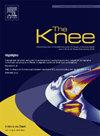The coronal plane alignment of the knee classification of a Japanese population indicates more varus deformity tendency compared with European countries
IF 1.6
4区 医学
Q3 ORTHOPEDICS
引用次数: 0
Abstract
Purpose
The purpose of this study was to compare the distribution of the coronal plane alignment of the knee (CPAK) phenotype between the healthy population and the arthritic population in Japan.
Methods
The retrospective cross-sectional study included 1049 knees. There were 256 healthy individuals with a total of 512 knees and 310 individuals with a total of 537 arthritic knees who underwent around-knee osteotomy between June 2010 and January 2024. The CPAK phenotype was compared between the healthy population and the arthritic population. Furthermore, the CPAK phenotype rates were compared between Japan and the other countries.
Results
The most common type of CPAK was type II (51.2%), followed by type III (26.4%) and type I (16.6%) in the healthy population, and type I (63.4%), followed by type II (22.9%) and type IV (6.3%) in the arthritic population. There were significant differences in CPAK types I, II, III, IV, VI between the healthy and arthritic populations. The rates of CPAK phenotype in Japan were significantly different from those in the other countries. The rates of apex distal joint line obliquity in the healthy and arthritic population (94.2%, 88.9%) were significantly higher than in the other countries.
Conclusions
There were significant differences in distribution of the CPAK phenotype between the healthy and arthritic populations. Furthermore, the Japanese distribution of the CPAK phenotype was different from other countries. Japanese CPAK types were highly involved in distal joint line apex obliquity, which indicates varus deformity in the future.
求助全文
约1分钟内获得全文
求助全文
来源期刊

Knee
医学-外科
CiteScore
3.80
自引率
5.30%
发文量
171
审稿时长
6 months
期刊介绍:
The Knee is an international journal publishing studies on the clinical treatment and fundamental biomechanical characteristics of this joint. The aim of the journal is to provide a vehicle relevant to surgeons, biomedical engineers, imaging specialists, materials scientists, rehabilitation personnel and all those with an interest in the knee.
The topics covered include, but are not limited to:
• Anatomy, physiology, morphology and biochemistry;
• Biomechanical studies;
• Advances in the development of prosthetic, orthotic and augmentation devices;
• Imaging and diagnostic techniques;
• Pathology;
• Trauma;
• Surgery;
• Rehabilitation.
 求助内容:
求助内容: 应助结果提醒方式:
应助结果提醒方式:


